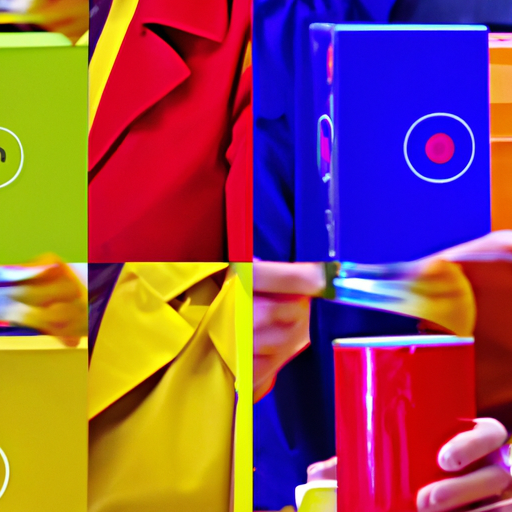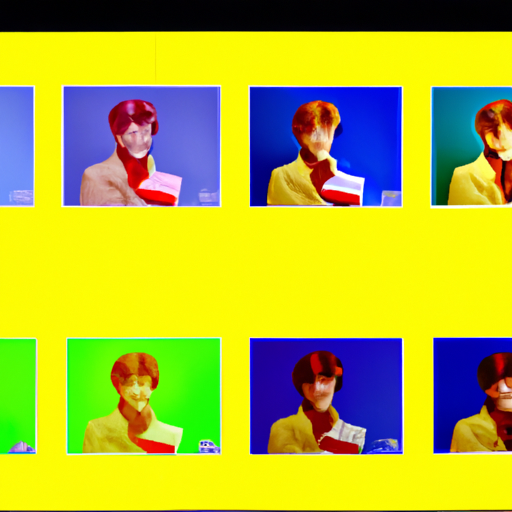
-
Table of Contents
The Psychology of Color in Package Design

When it comes to package design, color plays a crucial role in capturing consumers’ attention and influencing their purchasing decisions. The psychology of color has long been studied and utilized by marketers and designers to evoke specific emotions and create memorable brand experiences. In this article, we will explore the impact of color on package design and how it can influence consumer behavior.
The Power of Color
Color is a powerful tool that can communicate messages and evoke emotions without the need for words. It has the ability to grab attention, convey meaning, and create a lasting impression. In fact, studies have shown that people make subconscious judgments about products within 90 seconds of initial viewing, and up to 90% of that assessment is based on color alone.
Understanding the psychology of color is essential for package designers who want to create packaging that resonates with their target audience. Different colors have different meanings and associations, and harnessing these associations can help create a strong brand identity and connect with consumers on a deeper level.
The Meanings of Colors
Let’s take a closer look at the meanings and associations commonly attributed to different colors:
- Red: Red is often associated with passion, excitement, and energy. It can create a sense of urgency and stimulate appetite, making it a popular choice for food and beverage packaging.
- Blue: Blue is often associated with trust, reliability, and calmness. It is commonly used in industries such as finance and healthcare to convey a sense of professionalism and security.
- Yellow: Yellow is often associated with happiness, optimism, and warmth. It can grab attention and create a sense of joy, making it a popular choice for products targeting children or promoting a positive lifestyle.
- Green: Green is often associated with nature, growth, and freshness. It is commonly used in packaging for organic and eco-friendly products to convey a sense of sustainability and health.
- Orange: Orange is often associated with enthusiasm, creativity, and affordability. It can create a sense of excitement and impulse, making it a popular choice for products targeting a younger audience.
- Purple: Purple is often associated with luxury, royalty, and creativity. It can create a sense of elegance and sophistication, making it a popular choice for high-end products and brands.
These associations are not universal and can vary across different cultures and contexts. It is important for package designers to consider their target audience and the cultural context in which their product will be consumed to ensure the chosen colors align with the desired brand image.
Case Studies
Several case studies have demonstrated the impact of color on consumer behavior and the success of package design. Let’s explore a few examples:
1. Coca-Cola
Coca-Cola is known for its iconic red packaging, which has become synonymous with the brand. The use of red evokes feelings of excitement and energy, aligning with the brand’s image as a refreshing and invigorating beverage. The color has become so strongly associated with Coca-Cola that it is instantly recognizable even without the brand name.
2. Tiffany & Co.
Tiffany & Co., the luxury jewelry brand, is famous for its signature blue packaging. The use of blue conveys a sense of elegance, trust, and exclusivity, aligning with the brand’s image as a high-end retailer. The color has become a key element of Tiffany & Co.’s brand identity and is instantly associated with luxury and sophistication.
3. M&M’s
M&M’s, the popular candy brand, uses a variety of colors in its packaging to create a sense of fun and excitement. Each color represents a different flavor, allowing consumers to easily identify their preferred choice. The use of vibrant and playful colors appeals to both children and adults, making M&M’s a beloved and recognizable brand.
Color Combinations
While individual colors have their own meanings and associations, the combination of colors can also play a significant role in package design. Here are a few commonly used color combinations and their effects:
- Complementary Colors: Complementary colors are opposite each other on the color wheel, such as red and green or blue and orange. Using complementary colors in package design can create a strong contrast and make the product stand out.
- Analogous Colors: Analogous colors are adjacent to each other on the color wheel, such as blue and green or red and orange. Using analogous colors in package design can create a harmonious and cohesive look.
- Monochromatic Colors: Monochromatic colors are different shades and tints of the same color. Using monochromatic colors in package design can create a sophisticated and elegant look.
Considerations for Package Designers
When selecting colors for package design, there are several important considerations for designers to keep in mind:
- Target Audience: Understanding the preferences and cultural associations of the target audience is crucial. Different age groups, genders, and cultures may have different color preferences and interpretations.
- Brand Identity: The chosen colors should align with the brand’s personality and values. Consistency in color usage across different touchpoints can help strengthen brand recognition.
- Product Differentiation: Colors can be used strategically to differentiate a product from its competitors. Analyzing the color choices of competitors can help identify opportunities for differentiation.
- Accessibility: Considerations should be made for colorblind individuals and those with visual impairments. Using color alone to convey important information may exclude certain segments of the population.
Summary
The psychology of color in package design is a powerful tool that can influence consumer behavior and create memorable brand experiences. By understanding the meanings and associations of different colors, package designers can strategically select colors that align with the brand’s personality and resonate with the target audience. The use of color combinations and careful consideration of factors such as brand identity and accessibility can further enhance the effectiveness of package design. Ultimately, color plays a vital role in capturing attention, conveying meaning, and creating a lasting impression in the minds of consumers.
